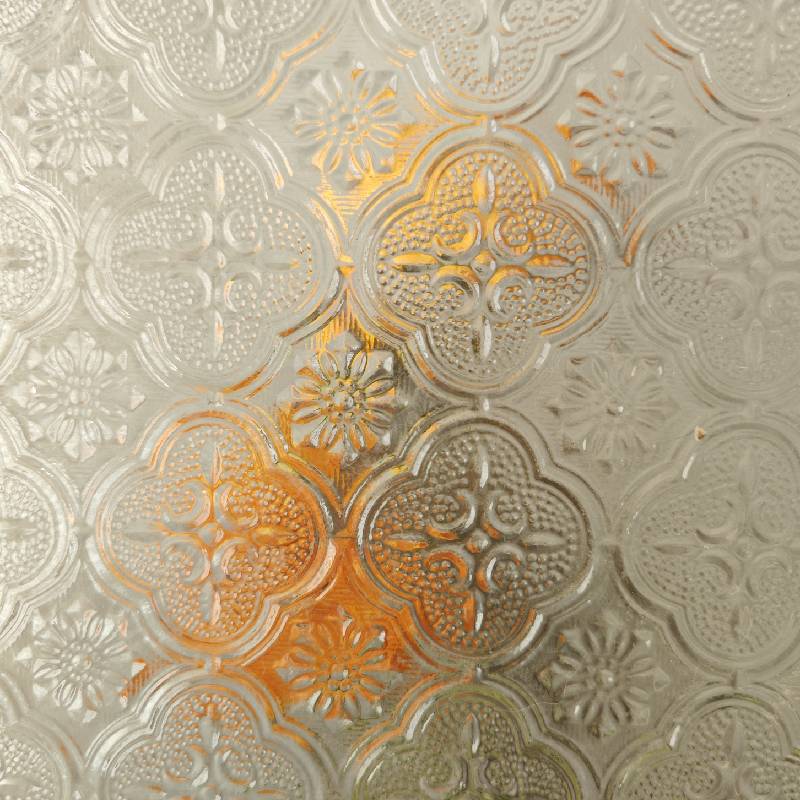

Reflective Float Glass A Comprehensive Overview
Reflective float glass is a remarkable material that combines aesthetics with functionality, making it highly desirable in architectural and interior design applications. This type of glass is produced through the float glass process, which involves floating molten glass on top of molten tin to create a perfectly flat and smooth surface. The unique reflective properties of this glass make it a popular choice among architects, designers, and builders looking to enhance both the form and performance of their structures.
The Manufacturing Process
The production of reflective float glass involves several key steps. Initially, raw materials such as silica sand, soda ash, and limestone are meticulously combined and heated in a furnace to create molten glass. This molten glass is then poured onto a bath of molten tin, where it floats and spreads evenly, resulting in a uniform thickness that can range from 2mm to 19mm. After cooling, the float glass can undergo further treatment to enhance its reflective properties.
To create reflective float glass, a thin metallic coating—usually aluminum—is deposited onto one surface of the glass. This coating is applied through a process known as vacuum deposition, where the metal is vaporized and then condensed onto the glass surface, forming a thin, reflective layer. The coating not only provides aesthetic value but also improves the glass's thermal insulation and solar control properties.
Properties and Benefits
Reflective float glass possesses several advantageous properties. Firstly, its reflective surface can significantly reduce glare from sunlight, making it an excellent choice for building facades and windows in sunny locations. This feature enhances indoor comfort by controlling the amount of natural light that enters a space while also minimizing the need for artificial lighting during the day.
Moreover, reflective float glass aids in thermal regulation. The metallic coating reflects a portion of solar radiation, which can help maintain cooler indoor temperatures during hot weather and improve energy efficiency. This characteristic is particularly beneficial in commercial buildings where energy costs can be substantial.

Another important property of reflective float glass is its aesthetic appeal. The reflective surface can create a visually striking effect, transforming buildings into modern, sleek structures. It is available in a variety of colors and levels of reflectivity, enabling designers to select the perfect glass to complement their architectural vision.
Applications
The versatility of reflective float glass makes it suitable for a wide range of applications. In commercial architecture, it is commonly used in office buildings, shopping centers, and hotels, where its reflective properties can enhance the building’s appearance while providing energy-saving benefits. In residential architecture, homeowners opt for reflective float glass in windows and patio doors to achieve a contemporary look and improve energy efficiency.
In addition to building applications, reflective float glass is increasingly being used in interior design. It can be found in decorative panels, mirrors, and glass-finish furniture, where it adds sophistication and a sense of space to the environment. The reflective quality of the glass can also contribute to the illusion of depth, making smaller rooms appear larger and more open.
Environmental Considerations
As the global focus shifts toward sustainability, the use of reflective float glass aligns well with environmentally conscious construction practices. The glass can be recycled, reducing waste and promoting a circular economy. Furthermore, the energy-saving capabilities of reflective glass contribute to lower energy consumption in buildings, thus minimizing the overall carbon footprint.
Conclusion
Reflective float glass is a material that successfully marries functionality with aesthetic appeal. Its production process results in a versatile product that offers numerous benefits, from energy efficiency and glare reduction to enhancing the visual aesthetics of buildings and interiors. As architects and designers continue to seek innovative solutions to modern design challenges, reflective float glass remains a vital component in the toolkit of materials that help create beautiful, sustainable, and energy-efficient environments. Its ongoing evolution in design and technology promises even greater potential in the future, securing its place as a favored choice in the construction and design industries.